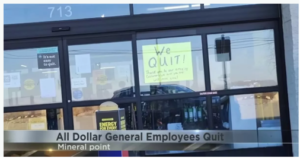People live in their own functional domains. They have their responsibilities, their metrics, and they can become defenders of their domains. Though from the best intentions, internal competition ultimately creates the reactionary boundaries that we have come to call silos, which harm an organization in ways that are becoming increasingly fatal.
I won’t spend an inordinate amount of time on this because we all know and dislike silos. We have built an awareness of the problem, and we have an accurate model, so our task is to put our heads together and figure out how to stop them.
As it turns out, customer experience unlocks a radical capability of mapping the customer journey. This sounds innocent enough, I’ll admit, but if you look deeper you will see that this fundamental process is anathema to silos. To destroy silos, all you need to do is focus on changing customer journeys.
And you can use the fundamental discord between customer and internal competitiveness to generate a cascading disruption throughout the organization – a chain reaction that is like a noise of the perfect pitch to shatter glass – which can thus demolish silos where they stand.
From Touchpoint to Customer Journey: How the simple act of connecting the dots will start a revolution
Customer experience has made a revolutionary discovery. You see, the game used to center on the enhancement of “customer touchpoints,” or specific interactions between customer and company. But there is a significant shortcoming in this myopic view, namely, that one interaction rarely satisfies a customer need. So sure, we can look at interactions all day, but what the customer sees is the entire journey from need until satisfaction (From Touchpoints to Journeys: Seeing the world as customers do, 2016). To empathize with our customers, to glean real meaning from the data of interactions, we need to see the whole story.
This can mean following customers across devices, across competitors, across the many investigations and decisions leading toward and beyond purchase. Understanding the real context for each interaction, where it has come from and where it might lead, is helping businesses engage customers wherever they are and then lead them through the decision-making process easily and efficiently.
“We’re now seeing a significant shift in strategy, from primarily reactive to aggressively proactive… companies are designing and refining journeys to attract shoppers and keep them, creating customized experiences so finely tuned that once consumers get on the path, they are irresistibly and permanently engaged. Unlike the coercive strategies companies used a decade ago to lock in customers (think cellular service contracts), cutting-edge journeys succeed because they create new value for customers: Customers stay engaged because they benefit from the journey itself.” (Harvard Business Review, Competing on Customer Journeys, 2015).
To compete on end-to-end journeys, businesses are gaining sight and control capabilities across silos. In the last three years, we have seen Marketing and Sales coalesce around this very initiative; we have seen increased connection and coordination between Sales and Service divisions; we have, with gratitude, seen reactionary silo walls begin to crumble in the face of proactive leadership.
Customer Journey Mapping Eradicates Silos in Banking
Remember just ten years ago, how difficult it was to open a new bank account? You had to fill out a million sheets of paper, forms upon forms, and the process would take days or even a week or more to complete. Annoying right?
Now we take our ability to open an account within minutes for granted, but this transformation was extremely challenging for financial institutions because it required cross-functional collaboration. Multiple departments had to work internally and externally to destroy all that red-tape between the customer and account creation.
The results decimated the amount of information and time required, and banks who were able to lead this trend became market winners. Since then, the banking industry has become a poster child for digitally enhanced customer experience, delivering key capabilities like kiosk tellers, mobile deposits, and more every year. How did this collaborative ethos occur in some of the largest, most traditional organizations in the world?
They built up from initial cross-functional work and have systematized the process to address journeys over touchpoints, a simple idea that has cascaded throughout these institutions, from C-Suite to teller.
Let Cross-Functional Collaboration Cascade Into Every Nook and Cranny
Is it easier to reroute a river or a drop of water? To change the tune of the entire organization, we must begin in the C-Suite, or our initiative will be ineffective and rampantly inefficient.
How can executives re-design the business to support journeys?
- Start with vision as expressed by the CEO.
- Set up the CX processes to analyze customer satisfaction and ultimately prioritize specific journeys representing the best opportunities to deliver value.
- Follow through with a mandate to the C-Suite to organize a cross-functional board to improve the prioritized journey, and imbue this cross-functional board with the highest level of authority to enact customer-centric changes.
This seed project will not only unlock value around one goal; it will also lead to a chain reaction, the creation of additional boards that will cut through the silos that once seemed to stand so tall.
Sources
David C. Edelman and Marc Singer. “Competing on Customer Journeys: You have to create new value at every step.” Harvard Business Review. March 2016. Accessed March 20, 2018.
Nicolas Maechler, Kevin Neher, and Robert Park. “From Touchpoints to Journeys: Seeing the world as customers do.” McKinsey & Company. March 2016. Accessed March 16, 2018.






